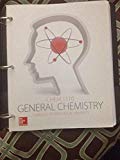
Concept explainers
(a)
Interpretation:
The given compound should be filled whether it is resonance structure, constitutional isomer, cis/trans isomer or same structure.
Concept introduction:
Isomer: Molecule has same molecular formula but different structural arrangement is called isomer.
Geometric isomerism (also known as E-Z isomerism or cis-trans isomerism): same molecular formula but different arrangement in the space. These isomers happen where you have restricted rotation in a molecule (double bond in the molecule). The
Constitutional isomer: (or structural) isomers differ in the connectivity they contain different functional groups and / or bonding patterns is called constitutional isomer.
Resonance: it is a process of delocalization electrons with in the molecule.
(b)
Interpretation:
The given compound should be filled whether it is resonance structure, constitutional isomer, cis/trans isomer or same structure.
Concept introduction:
Isomer: Molecule has same molecular formula but different structural arrangement is called isomer.
Geometric isomerism (also known as E-Z isomerism or cis-trans isomerism): same molecular formula but different arrangement in the space. These isomers happen where you have restricted rotation in a molecule (double bond in the molecule). The functional groups are same side in the molecule is cis, the functional groups are opposite side is called trans isomer.
Constitutional isomer: (or structural) isomers differ in the connectivity they contain different functional groups and / or bonding patterns is called constitutional isomer.
Resonance: it is a process of delocalization electrons with in the molecule.
(c)
Interpretation:
The given compound should be filled whether it is resonance structure, constitutional isomer, cis/trans isomer or same structure.
Concept introduction:
Isomer: Molecule has same molecular formula but different structural arrangement is called isomer.
Geometric isomerism (also known as E-Z isomerism or cis-trans isomerism): same molecular formula but different arrangement in the space. These isomers happen where you have restricted rotation in a molecule (double bond in the molecule). The functional groups are same side in the molecule is cis, the functional groups are opposite side is called trans isomer.
Constitutional isomer: (or structural) isomers differ in the connectivity they contain different functional groups and / or bonding patterns is called constitutional isomer.
Resonance: it is a process of delocalization electrons with in the molecule.
(d)
Interpretation:
The given compound should be filled whether it is resonance structure, constitutional isomer, cis/trans isomer or same structure.
Concept introduction:
Isomer: Molecule has same molecular formula but different structural arrangement is called isomer.
Geometric isomerism (also known as E-Z isomerism or cis-trans isomerism): same molecular formula but different arrangement in the space. These isomers happen where you have restricted rotation in a molecule (double bond in the molecule). The functional groups are same side in the molecule is cis, the functional groups are opposite side is called trans isomer.
Constitutional isomer: (or structural) isomers differ in the connectivity they contain different functional groups and / or bonding patterns is called constitutional isomer.
Resonance: it is a process of delocalization electrons with in the molecule.
Want to see the full answer?
Check out a sample textbook solution
Chapter 23 Solutions
Chemistry: Atoms First V1
- What is the reactant that makes the following product of the reaction? Please provide a detailed explanation and a drawing to show how the reaction proceeds.arrow_forwardDraw the products formed when each ester is hydrolyzed with water and sulfuric acid.arrow_forwardDraw the complete structural formula from each condensed structure. include all hydrogen atoms.arrow_forward
- Draw the complete structural formula from each condensed structure. Include all hydrogen atoms.arrow_forwardIndicate how H2O2 intervenes in the synthesis of K4[Co2(C2O4)4(OH)2]. Write the reactions.arrow_forwardExplain how, based on physical gas adsorption isotherms, we can determine whether multi-walled C nanotubes are open at their ends. Explain this.arrow_forward
- can somone answer pleasearrow_forwardConstruct a molecular orbital energy-level diagram for BeH2. Sketch the MO pictures (schematic representation) for the HOMO and LUMO of BeH2 [Orbital Potential Energies, H (1s): -13.6 eV; Be (2s): -9.3 eV, Be (2p): -6.0 eV]arrow_forwardIndicate the isomers of the A(H2O)6Cl3 complex. State the type of isomerism they exhibit and explain it briefly.arrow_forward
- State the formula of the compound potassium μ-dihydroxydicobaltate (III) tetraoxalate.arrow_forwardConsider the reaction of the cyclopentanone derivative shown below. i) NaOCH2CH3 CH3CH2OH, 25°C ii) CH3!arrow_forwardWhat constitutes a 'reference material', and why does its utilization play a critical role in the chemical analysis of food products? Provide examples.arrow_forward
 Chemistry: Principles and PracticeChemistryISBN:9780534420123Author:Daniel L. Reger, Scott R. Goode, David W. Ball, Edward MercerPublisher:Cengage Learning
Chemistry: Principles and PracticeChemistryISBN:9780534420123Author:Daniel L. Reger, Scott R. Goode, David W. Ball, Edward MercerPublisher:Cengage Learning Organic And Biological ChemistryChemistryISBN:9781305081079Author:STOKER, H. Stephen (howard Stephen)Publisher:Cengage Learning,
Organic And Biological ChemistryChemistryISBN:9781305081079Author:STOKER, H. Stephen (howard Stephen)Publisher:Cengage Learning, General, Organic, and Biological ChemistryChemistryISBN:9781285853918Author:H. Stephen StokerPublisher:Cengage Learning
General, Organic, and Biological ChemistryChemistryISBN:9781285853918Author:H. Stephen StokerPublisher:Cengage Learning Chemistry for Today: General, Organic, and Bioche...ChemistryISBN:9781305960060Author:Spencer L. Seager, Michael R. Slabaugh, Maren S. HansenPublisher:Cengage Learning
Chemistry for Today: General, Organic, and Bioche...ChemistryISBN:9781305960060Author:Spencer L. Seager, Michael R. Slabaugh, Maren S. HansenPublisher:Cengage Learning World of Chemistry, 3rd editionChemistryISBN:9781133109655Author:Steven S. Zumdahl, Susan L. Zumdahl, Donald J. DeCostePublisher:Brooks / Cole / Cengage Learning
World of Chemistry, 3rd editionChemistryISBN:9781133109655Author:Steven S. Zumdahl, Susan L. Zumdahl, Donald J. DeCostePublisher:Brooks / Cole / Cengage Learning





